Data Scanning Devices:
Data scanning devices are input devices used for direct data entry into a computer system from source documents.
Some of them are also capable of recognizing marks or characters. These devices
have following characteristics:
1. They eliminate the need for a manual
entry of data by human beings.
2. Automatic entry of data with their
use improves data accuracy and increases timeliness of the information processed.
3. They demand high quality of input
documents because of direct data entry from source documents. Documents that
are typed poorly, have strikeovers, or have erasures are normally rejected.
4. Form design and ink specification
usually becomes more critical with the use of these devices than when keyboard
devices are used to key in data from forms.
Data of
scanning devices are of many types. Commonly used ones are as follows:
Image Scanner:
An image scanner is an input device that translates paper documents
into an electronic format that can be stored in a computer. The input documents
may be typed text, pictures, and graph or even hand written material. This
input device has been found to be very useful in preserving paper documents in
electronic form. Stored images can even
be altered and manipulated in interesting ways, if the computer has image
processing software.
Image scanners come in various shapes and sizes. Two commonly
used types are:
1. Flatbed Scanner:
A flatbed scanner is like a copier machine consisting of a box having a glass plate on its top and a lead that covers the glass plate. A document to be scanned is placed upside down on the glass plate. A light source, situated below the glass plate, moves horizontally from one end to another when activated. After scanning one line, the light beam moves up a little and scans the next line. The process is repeated for all the lines. It takes about 20 seconds to scan a document of size 21 cm x 28 cm.
1. Handheld Scanner:
A handheld scanner has a set of light emitting diodes encased
in a small case that can be held in hand conveniently. To scan a document,
the scanner is dragged slowly over it from its one end to the other end with
its light on. The scanner has to be dragged where is steadily and
carefully, otherwise the conversion of the document into its equivalent of
bitmap will not be correct.
Due to this reason, handheld scanners are used only in
cases where high accuracy is not
needed. They are also used when the volume of documents to be scanned is
low. They are much cheaper than flatbed scanners.
Optical Character Recognition (OCR) Device:
When image scanners are used for inputting text documents,
they have following two limitations:
- Since a scanned input document
is stored as an image, instead of text, it is not possible to do any word
processing of the document.
- Storage space required for
storing the document as an image is much more than that required for
storing the same document as a text.
OCR technology is used to overcome these limitations. In this
case, the scanner is equipped with character recognition software called OCR software that converts the
bitmap images of characters to equivalent ASCII codes. That is, the scanner
first creates the bitmap image of the document and then the OCR software
translates the array of grid points into ASCII text that the computer can
interpret as a letter, number, and special characters.
OCR software is extremely
complex because it is difficult to make a computer recognise an unlimited
number of typefaces and fonts. Hence, these software are designed to recognize
text written using standard type fonts called OCR fonts. Two such standard fonts are OCR-A (American standard) and OCR-B
(European standard).
Note that if the document contains italics or boldface
letters, or fonts other than that for which the OCR software has been designed,
the OCR software will not work effectively.
Optical Mark Reader (OMR):
These scanners are capable of recognizing a pre-specified
type of mark made by pencil or pen.
For example, in objective type test, applicants mark their choices of correct
answers on a special pre-printed test scoring sheet by darkening small square,
circular, or oval shaped box by a pencil. These answer sheets are fed directly
to a computer for grading with the use of an optical mark reader.
The actual technique used by an OMR device for recognition of
marks involves focusing a light on the page being scanned and detecting the
reflected light pattern from the marks. Pencil marks made with soft lead pencil
reflect the light enabling the OMR Reader to determine which responses are
marked.
Barcode Reader:
Data coded in the form of small lines (known as bars) are
known as barcodes. Barcodes represent
alphanumeric data by a combination of adjacent vertical lines (bars) by varying
their width and the spacing between them. They are used particularly for unique
identification of all types of goods, books, postal packages, badges, tags, etc.
A barcode reader
is a device used for reading bar coded data. It may be a handheld
scanner, or embedded in a stationary scanner. It scans a barcode image and converts
it into an alphanumeric value that is then fed to a computer connected to the
bar code reader.
A barcode reader uses laser
beam scanning technology. A laser beam is stroked across the patterns of bars
of a bar code. Different barcodes having different patterns of bars reflect the
beam in different ways that is sensed by a light
sensitive detector. Reflected light patterns are converted into electrical
pulses and then transmitted to recognition logic circuits that convert it into
an alphanumeric value.
There are many types of bar-coding systems. The most widely
known one is the Universal Product Code
(UPC). The UPC, originally used for supermarket items, is now printed on
other consumer goods also. The UPC barcode patterns are decoded as 10 digits. The
first of the five digits identify the manufacturer or supplier of the product,
and the next five digits identify specific product of the manufacturer. Barcode
readers are found commonly in supermarkets and department stores.
Magnetic Ink Character Recognition (MICR):
MICR is similar to OCR. It is used by banking industry for faster processing of large volume of cheques
handled everyday by this industry. A bank cheque has some bank’s
identification code, account number, and cheque number pre-printed on it by
using characters from a special character set. Special ink containing
particles of iron oxide is used for
free printing the characters on the cheque.
When a customer presents a filled in cheque at a bank, a bank
employee manually enters the customer supplied information including the amount
written on the cheque. This cheque is then processed by using an MICR reader-sorter that can recognize
magnetic ink characters. The MICR reader-sorter reads the pre-printed data on
the cheques, and sorts the cheques for distribution to other banks or for
further processing.
The most commonly used character set by MICR devices is known
as E13B font consisting of numbers
0 to 9 and four special characters.
MICR technology speeds up data input for a banking industry because cheques can
be paid directly into the input device and processed automatically thereafter.
MICR has not been adopted by other industries because the
currently supported character set has only 14 symbols. No alphabetic characters
are available.
Digitizer:
A digitizer is an input device used for converting
(digitizing) pictures, map, and drawings into digital form for storage in
computers. For example, the x and y coordinates of points in a drawing may
be stored in digital form. This enables recreation of the drawing from the stored
information and easy incorporation of changes in the drawing, whenever
required.
Digitizer consists of a digitizing
tablet also known as graphics tablet
associated with stylus. The digitizing
tablet is a flat surface that contains hundreds of fine copper wires forming a
grid. Each copper wire receives electric pulses. The digitizing tablet can be
spread over a working table and is connected to a computer. The stylus is
like a pen or a lens like cursor with a cross hair and button. It is
connected to the tablet and can be pressed down at a point on the tablet to
input the(x, y) coordinates of the point.
On moving the stylus on the tablet, a cursor on computer
screen moves simultaneously to a corresponding position on the screen to
provide visual feedback to the operator. This enables the operator to draw
sketches directly or through input sketched drawings very easily. Inputting
drawings or developing sketches by using a digitizer is further simplified by
the fact that poorly sketched lines, arcs, and other graphical objects are
automatically input as mathematically precise objects like straight lines and
smooth curves.
Digitizers are used commonly in the area of Computer Aided Design (CAD) by
architects and engineers to design cars, buildings, medical devices, robots,
mechanical parts, etc. They are also used in the area of Geographic Information System (GIS) for digitizing of maps
available in paper form.
Electronic Card Reader:
Electronic cards and their associated readers offer another
means of direct data entry into a computer system. Electronic cards are small plastic cards having encoded data
appropriate for the application for which they are used. An electronic card reader, normally
connected to a computer, is used to read the data encoded on an electronic
card and transfer it to the computer for further processing.
Electronic cards are often issued by banks to their customers
for use with automatic teller machines (ATMs). An ATM allows a customer to
deposit or withdraw cash 24 hours a day without the need to interact with a
bank employee.

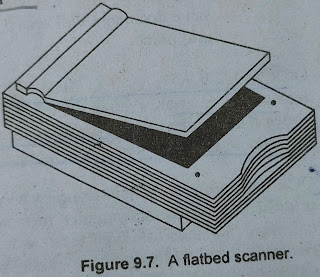
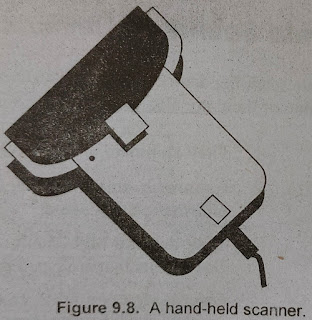

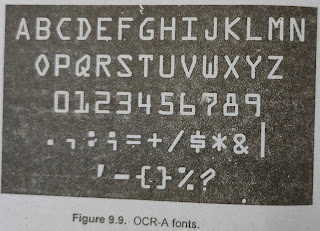
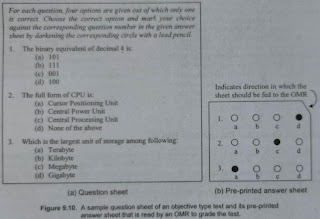
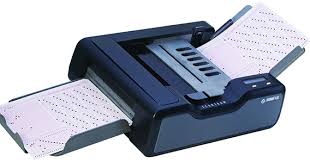
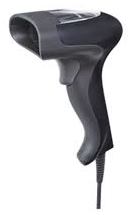
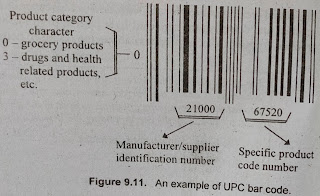
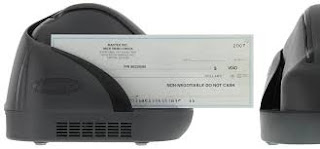
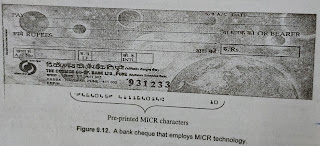
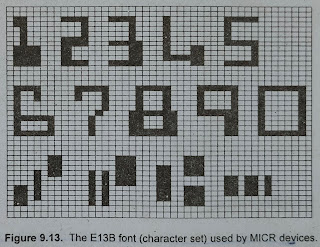
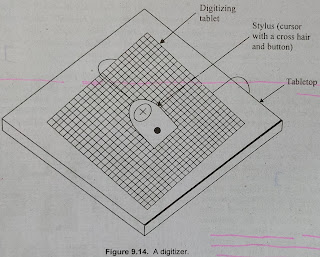
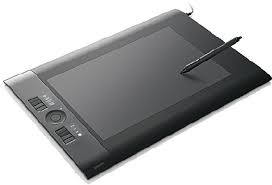
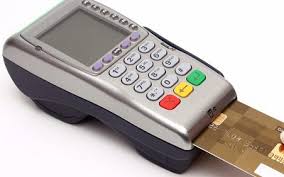
No comments:
Post a Comment